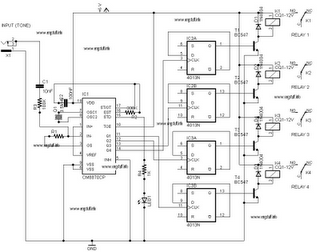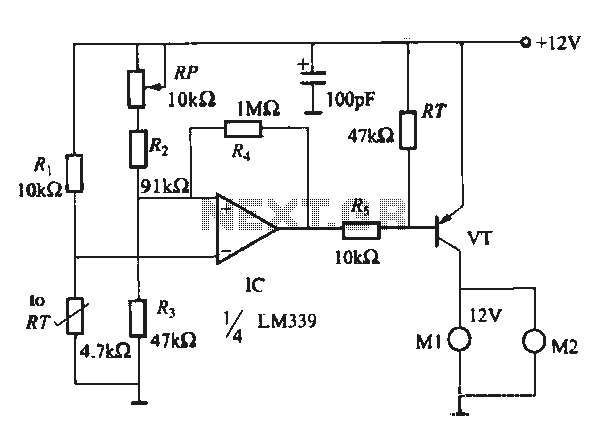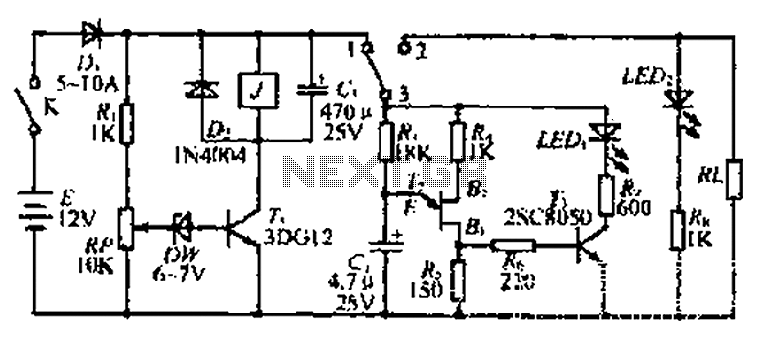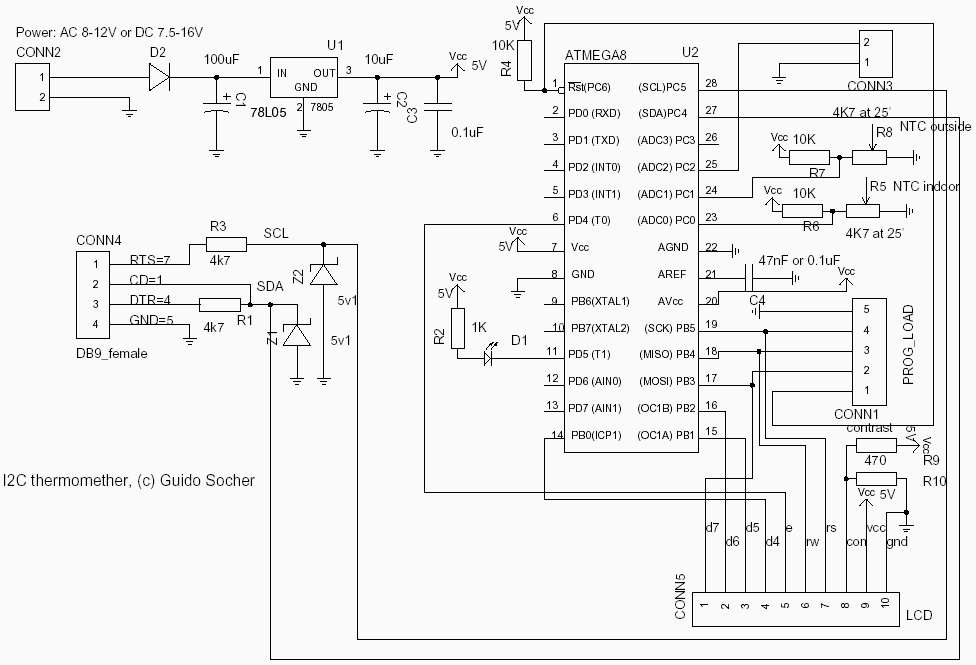
DTMF Remote Domestic System Control

The following circuit illustrates a DTMF Remote Domestic System Control Circuit Diagram. Features: DTMF signals can be transmitted over a radio to control various domestic appliances.
The DTMF (Dual-Tone Multi-Frequency) Remote Domestic System Control Circuit utilizes DTMF signaling for remote operation of household devices. The circuit typically consists of a DTMF decoder, a microcontroller, and a relay driver circuit.
The DTMF decoder receives audio signals that correspond to specific DTMF tones, which are generated by a mobile phone or a DTMF keypad. Each tone represents a unique command, allowing the user to control various appliances such as lights, fans, and other electronic devices. The decoder converts these audio signals into binary signals that can be processed by a microcontroller.
The microcontroller interprets the binary signals and executes predefined commands based on the received DTMF tones. For instance, pressing a specific key on the DTMF keypad may turn on a light or activate a fan. The microcontroller is programmed to respond to these signals and control the output through a relay driver circuit.
The relay driver circuit acts as an interface between the microcontroller and the high-power appliances. It allows the microcontroller to switch on or off the appliances safely, as it can handle higher voltage levels than the microcontroller itself. Typically, this circuit includes transistors or opto-isolators to ensure that the microcontroller is protected from high voltages.
The overall system can be powered by a standard AC supply, which is then rectified and regulated to provide the necessary voltage levels for the microcontroller and other components. Additionally, the circuit may include indicators such as LEDs to provide visual feedback about the status of the appliances being controlled.
In summary, this DTMF Remote Domestic System Control Circuit offers a convenient and efficient way to manage household devices remotely, leveraging DTMF signaling technology for seamless operation.The following circuit shows about DTMF Remote Domestic System Control Circuit Diagram. Features: DTMF signals can be transmitted over a radio to .. 🔗 External reference
The DTMF (Dual-Tone Multi-Frequency) Remote Domestic System Control Circuit utilizes DTMF signaling for remote operation of household devices. The circuit typically consists of a DTMF decoder, a microcontroller, and a relay driver circuit.
The DTMF decoder receives audio signals that correspond to specific DTMF tones, which are generated by a mobile phone or a DTMF keypad. Each tone represents a unique command, allowing the user to control various appliances such as lights, fans, and other electronic devices. The decoder converts these audio signals into binary signals that can be processed by a microcontroller.
The microcontroller interprets the binary signals and executes predefined commands based on the received DTMF tones. For instance, pressing a specific key on the DTMF keypad may turn on a light or activate a fan. The microcontroller is programmed to respond to these signals and control the output through a relay driver circuit.
The relay driver circuit acts as an interface between the microcontroller and the high-power appliances. It allows the microcontroller to switch on or off the appliances safely, as it can handle higher voltage levels than the microcontroller itself. Typically, this circuit includes transistors or opto-isolators to ensure that the microcontroller is protected from high voltages.
The overall system can be powered by a standard AC supply, which is then rectified and regulated to provide the necessary voltage levels for the microcontroller and other components. Additionally, the circuit may include indicators such as LEDs to provide visual feedback about the status of the appliances being controlled.
In summary, this DTMF Remote Domestic System Control Circuit offers a convenient and efficient way to manage household devices remotely, leveraging DTMF signaling technology for seamless operation.The following circuit shows about DTMF Remote Domestic System Control Circuit Diagram. Features: DTMF signals can be transmitted over a radio to .. 🔗 External reference





